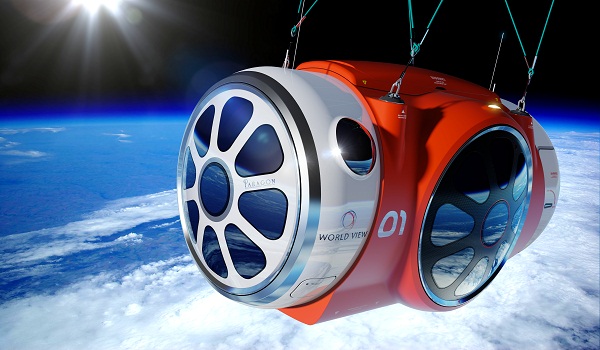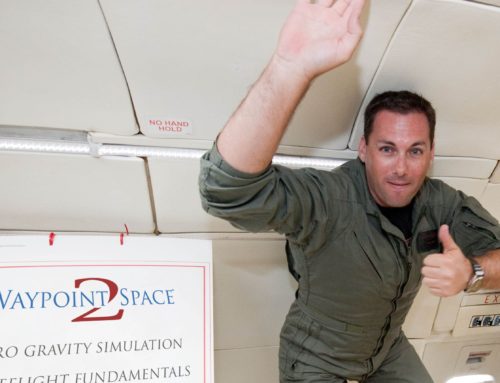For private citizens who want to go into space, the options are pretty limited right now. In the near future, though, that’s bound to change, as a number of companies are actively working on offering manned commercial space flight. Among those companies, though, probably one of the most intriguing is Tucson-based World View, which wants to take people to space without using spaceflight’s biggest technical hurdle: rockets.
Instead, World View’s concept is to fly people to the edge of space using large, helium balloons attached to a pressurized capsule.
The capsule, which holds six passengers and two crew members, will conceptually take about an hour and a half to reach a height of 100,000 feet – just at the edge of space and high enough to see the actual curvature of the Earth. (But with no zero-G effect.) The balloon will float at that altitude for about two hours to allow the passengers to view the Earth move below them, and then the capsule will glide down to Earth in the span of about 40 minutes.
Last week, the FAA announced that World View is a commercial space operation and falls under their regulatory jurisdiction.
The vehicle itself is being designed by the Paragon Space Development Corporation. Jane Poynter, a veteran of the Biosphere 2 experiment and Paragon’s Chairwoman and President, serves as World View’s CEO. NASA veteran and Golden Spike board member Alan Stern serves as the company’s Chief Scientist.
The balloon technology itself has a rich history. Balloons have been used since the 1950′s for scientific explorations of space and near-space environments. And more recently, daredevil Felix Baumgartner traveled by balloon for his skydive from space.
“The idea has been around for awhile,” Poynter told me. “It was a very elegant way to get people to space and understand the environment and how to protect people.”
It’s a more affordable way to get to space as well. Virgin Galactic, whose first commercial flights are planned to launch next year, charges $250,000 for a suborbital flight to space. By contrast, a balloon flight with World View will only cost $75,000. “Drinks included!” Poynter assured me.
World View flights are planned to start in approximately three years, and the company intends to be able to launch from several different locations.
“We don’t need a lot of infrastructure,” said Poynter. “So we can be flexible about locations.”
For Poynter, though, being able to send people into the sky to see the Earth in much the same way astronauts view it has a benefit beyond just the business basics.
“Yes, this is a fantastic business opportunity,” she told me. “But on an emotional level, I hear astronauts talk about the incredible, transformative experience of seeing Earth from space. I want to give other people their experience, and I’m pretty inspired to deliver it.”


